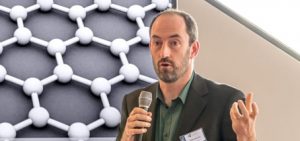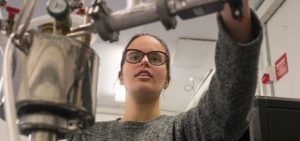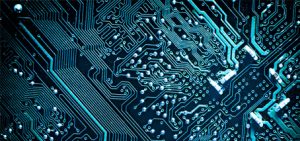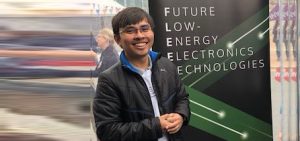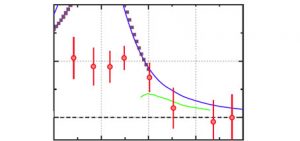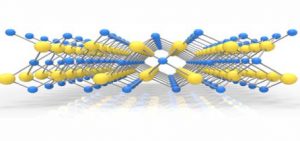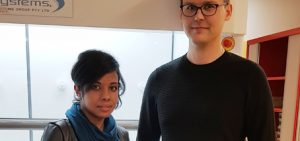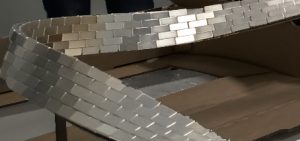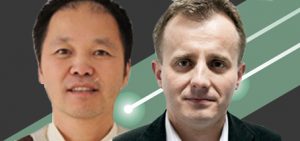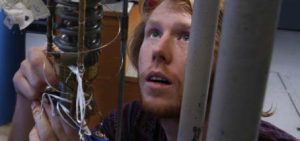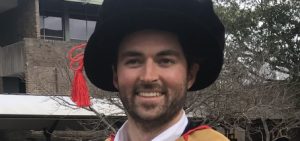Engage
See news from around FLEET, below
Catch up on all past issues of FLEET News newsletter
FLEET News
Congratulations to RMIT Professor Jared Cole, now a FLEET Chief Investigator. Jared is a theoretical physicist specialising in quantum physics and decoherence theory, particularly its application to solid-state systems. Within FLEET Jared investigates the influence of dissipation and decoherence on electronic transport in nanostructures, and its role in electronic devices based on topologically protected conduction channels. This is key to …
Half of the 2018 Nobel Prize for Physics has been awarded to Gérard Mourou and Donna Strickland for their method of generating high-intensity, ultra-short optical pulses Ultra-fast laser physics key to development of future electronics The technique developed by Mourou and Strickland has had enormous impact across the fields of chemistry, physics and biology, and provides the basis for important …
Quantifying the dynamics and interactions of electronic systems is crucial for understanding the mechanisms that make them useful candidates for ultra-low energy electronics. We need to observe and measure the behaviour of electron interactions at a femtosecond scale (ie, at a few millionths of a billionth of a second). As a research tool, Optical Coherent Multidimensional Spectroscopy (CMDS) offers the …
First year physics students enthusiastic to explore ‘new’ physics Measuring quantum Hall effect with liquid helium-3, a Cold War side-product Window to topological materials and future electronics UNSW first year physics students have been measuring the quantum Hall effect (QHE), a relatively new piece of physics recognised by the 1985 Nobel Prize in Physics, which requires precision experimental setup. When …
Published in Monash Lens 27 Sep 2018 Featuring Meera Parish & Michael Fuhrer, School of Physics & Astronomy, Monash University Cheaper, faster, smarter, smaller – the ever-evolving digital world has changed the way we live, as predicted by the law Gordon Moore outlined in 1965. Moore’s Law foretold that the number of transistors in a dense integrated circuit would double …
FLEET’s Eli Estrecho recently finished his PhD, and is now a postdoctoral researcher, working with Professor Elena Ostrovskaya in the Polariton-BEC Research Group, Australian National University. We asked Eli some questions about his research, how he got into physics, and the thrill of fundamental discoveries. Q: Tell me about your research at ANU EE: I study hybrid particles of light …
FLEET researchers have designed a rapid nano-filter that can clean dirty water over 100 times faster than current technology. Simple to make and simple to scale up, the technology harnesses naturally occurring nano-structures of aluminium hydroxide that grow on liquid metal gallium. The researchers behind the innovation at RMIT University and UNSW have shown it can filter both heavy metals …
Scaling symmetry in a 2D Fermi gas breaks down with strong interactions between particles Quantum gas studies unlock fundamental physics—with an immediate application A FLEET study of ultracold atomic gases – a billionth the temperature of outer space – unlocks new, fundamental quantum effects. The researchers at Swinburne University of Technology studied collective oscillations in ultracold atomic gases – identifying …
The discovery of new ferroelectric properties in the novel, layered material Indium(III) selenide (β’-In2Se3) enhances this material’s candidacy for non-volatile memory and low-power electronic and optoelectronic switches. FLEET researchers at Monash University and UNSW were on the Australian-Chinese team that confirmed in-plane ferroelectricity in the material, β’-phase In2Se3. In2Se3 belongs to a class of layered materials known as van der Waals …
First ever large-scale 2D surface deposition of piezoelectric material Simple, inexpensive technique opens new fields for piezo-sensors & energy harvesting Researchers have developed a revolutionary method to ‘print’ large-scale sheets of two dimensional piezoelectric material, opening new opportunities for piezo-sensors and energy harvesting. Importantly, the inexpensive process allows the integration of piezoelectric components directly onto silicon chips. Until now, no …
A super-cooled, superconducting Mobius-track impresses the crowds, helps embed FLEET science As a cool science demo, FLEET’s superconductor Mobius track ticks all the boxes: liquid nitrogen – tick. Superconductor – tick. Cool shape – tick. Relevance to the science – tick tick tick. The track features 1500 neodymium magnets, fixed into the shape of a Mobius strip, so that a …
We are extremely pleased to announce two new FLEET partners. The Beijing Computational Science Research Center (CSRC) and Wroclaw University of Science and Technology have joined the 13 other leading Australian and international science organisations partnering with FLEET. Wroclaw University of Science and Technology (WUST) is Poland’s top-ranked new-technology university, excelling in computer science, electronics and materials science. Our new Partner …
Controlling hole spin for future quantum spin-based devices, topological materials The ‘spins’ of electrons (and holes) in semiconductors have potential applications in spintronics, spin-based quantum computing, and topological systems. A particle’s spin is its intrinsic angular momentum. In a magnetic field, the spins of electrons or holes becomes oriented either parallel (‘spin-up’) or anti-parallel (‘spin-down’) to the field direction – just …
Hole-based artificial atoms could be key to spin-based qubit First isolation of one individual hole in a silicon MOSFET quantum dot A UNSW study published this week resolves key challenges in creation of hole-based artificial atoms, with excellent potential for more-stable, faster, more scalable quantum computing. Artificial atoms in quantum computing The spin states of electrons confined to semiconductor quantum …
Exciting new states of quantum matter enlisted to important environmental challenges FLEET’s Harley Scammell’s outstanding PhD recognised by UNSW The thesis “Interplay of quantum and statistical fluctuations in critical quantum matter” will be published by Springer in hardcover and ebook. “It’s really great to have this research recognised by UNSW”, says Harley. “Hopefully, having the thesis published at Springer will make this …

